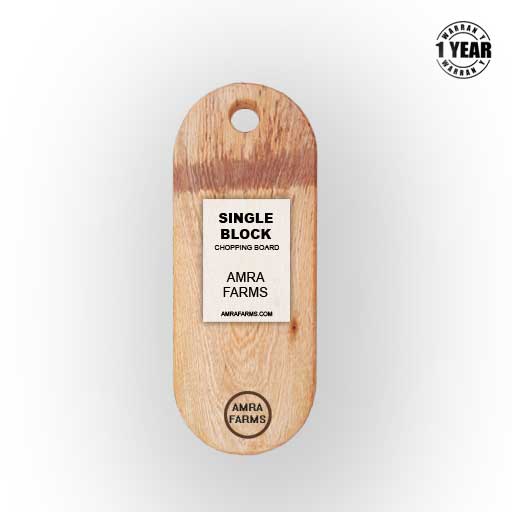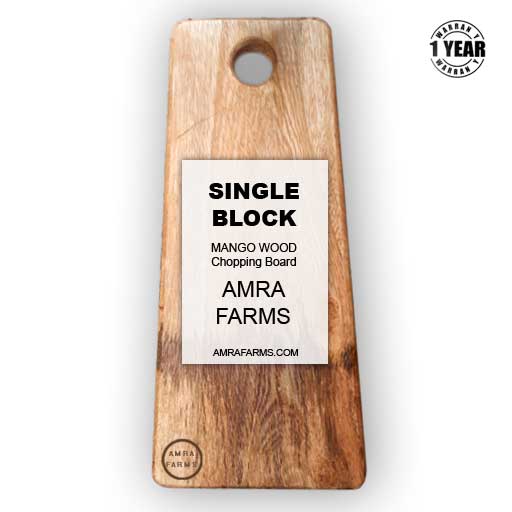Your cart is currently empty!
The Lowdown on Bamboo Chopping Boards: What is Bad about Bamboo Chopping Board
The Rise of Bamboo in Kitchens
Recent years have seen a lot of awareness on plastic and plastic products including chopping boards. With more and more people knowing the hazards of plastic in the kitchen, there came a new contender, bamboo chopping boards. Bamboo is natural, safe and a renewable resource. It is tough, durable and easily available. Bamboo chopping boards were portrayed as the best chopping boards, the new replacement to plastic boards.
The Popularity of Bamboo Cutting Boards
The popularity of bamboo chopping boards shot up over the past decade. Plastic chopping boards market went slightly down. But bamboo had captured a large market share with over 15%, while plastic still holds the market share of approximately 20%. Bamboo has a bigger market than glass chopping boards and stone chopping boards, standing currently as the third most used material for chopping boards after wood and plastic. The rise of bamboo is mostly due to the price factor. Being cheaper than wood and a replacement for plastic gives it a great advantage. But how good is the product and is it worth the hype?
Eco-friendly Appeal vs Real-world Performance
Bamboo is definitely eco-friendly. There is no doubt in it. It has minimal carbon footprint, does not require any maintenance (in terms of growth of the plant). Bamboo requires minimal resources and is available in abundance in India and China. But in the US and other parts of the world, bamboo is not as common. While bamboo is eco-friendly, flying a product from the eastern part of the world to the western countries is not really eco-friendly. In the real world, eco-friendliness requires you to have a larger perspective. Yes, bamboo is eco-friendly in India and China. But if you are purchasing a product in the United States, it’s not so much.
What Are Bamboo Chopping Boards Made Of?
Bamboo chopping boards are made from mature bamboo shoots. Bamboo is one of the few natural organic materials which grows fast and in abundance in Asian countries like China, Indonesia and India. They require no maintenance and regrow effortlessly after being harvested without any requirement for replantation. The bamboo shoots are split, flattened, processed, stuck together to make a flat surface and given a fine finish to be presentable. The key here is the process of making a bamboo board.
Commercial production of bamboo chopping boards requires bamboo fibres to be glued together. The use of chemicals, resins and adhesives used are often not food grade. While bamboo itself is safe for use, the process of making the chopping boards involves chemicals like aliphatic resin glue, polyurethane glue, cyanoacrylate, epoxy and polyvinyl acetate (PVA) glue. None of these are natural. Some of them are carcinogenic and not safe for use. Unfortunately, these are the chemicals which are required to bind the board together to endure the constant exposure to water.
The process of manufacturing the boards is hygienic in some cases but boards coming from some factories, immaterial of the location, may not come from the most sanitary locations. The process of manufacturing bamboo chopping boards is off-putting and almost revolting to observe.
Differences Between Natural Bamboo and Processed Boards
Bamboo boards are not all bad if they have the right construction. Natural bamboo boards are minimally altered and are carved or assembled with fewer adhesives, retain the natural structure and strength. On the contrary, processed boards are engineered and glued together with many thin strips or fibres of bamboo using high pressure and industrial adhesives. Most of the mass-produced bamboo boards fall into this category and are advertised as laminated bamboo cutting boards. These boards lack resistance and durability.
Hard on Knives: The Blade-Dulling Factor
One of the biggest drawbacks of a bamboo cutting board is its high strength. While this could and is usually advertised as a positive feature, bamboo cutting boards are known to dull knives faster. While steel knives can bear the hard surface for longer, iron and other softer metals will dull rather fast. To improve knife edge retention, wooden cutting boards are often recommended. If you are a chef, the best board for a chef knife is definitely not a bamboo cutting board. Opt for plastic if you have no other alternative. Hardwood boards are the best. Bamboo is a definite no.
Questionable Hygiene: Trapped Moisture and Glue Layers
Bamboo cutting boards due to it is prone to moisture retention which creates a breeding ground for fungus and mould. While the outer layer of a bamboo shoot is water-resistant, the inner fibres are more porous, enabling it to trap moisture. The outer layers are often stripped when creating the chopping board, making the material vulnerable. With more moisture retention through the fibre itself and the construction with joints, the hygiene of the board is affected. Food, especially meat which is moist, often creates health problems with bamboo. The lack of self-healing ability of bamboo combined with very less natural oil content adds to the hygiene concerns.
Toxic Glue and Formaldehyde Concerns
The use of toxic adhesives, often industrial grade with formaldehyde, creates a different problem altogether. Formaldehyde exposure creates problems like burning sensations in eyes, nose and skin irritation apart from other problems like nausea and wheezing. While these boards may be advertised as odour preventing or anti-bacterial, these are the boards which often create problems as they are often treated with chemicals. To ensure that you purchase a board which is formaldehyde-free, opt for solid bamboo boards without glues and joints.
Durability & Splintering Issues
Bamboo is known to splinter or crack over time. The repeated exposure to water and dry spells creates problems with glued layers separating. Bamboo boards are relatively low maintenance but come with a shorter lifespan compared to wood. Bamboo boards are less durable than solid hardwood chopping boards too. The average lifespan of a bamboo board is 2 years while that of a wooden board is often 4–5 years for a wood like mango and up to 10 years for a wood like teak.
Not as Sustainable as You Think
While bamboo chopping boards are advertised and marketed as a sustainable product, the truth is often far from it. The environmental cost of manufacturing bamboo boards is higher than what you would want to believe. The process of manufacturing bamboo boards commercially is not always eco-friendly. While ethical sourcing concerns may be real, they are very small compared to the environmental costs that indirectly affect the sustainability of the board. Transportation emissions alone would account for more than 50% of the sustainability claim while the use of excessive water, heating equipment and chemicals involved in the production of the bamboo boards attribute to the rest. Bamboo boards can be on the top of the list in greenwashing kitchen products compared to other products.
Maintenance Woes: High Maintenance with Low Returns
Bamboo boards are relatively low maintenance, but when compared to wood, they require more care. Frequent oiling, at least once or twice a week is recommended. They turn out to be very dry very fast if not oiled. This results in cracking of the board. Without oiling, the moisture retention of the board increases. Oil creates a layer of waterproofing for the board, without which more water is absorbed, which results in bloating of the board, then cracking and/or warping. Bamboo boards, like all wooden boards, are not dishwasher safe. Maintaining a wooden cutting board is the same as a bamboo cutting board but more frequent.
When Bamboo Might Still Be a Good Choice
Bamboo boards are OK in some situations and setups. If you use a board very occasionally or want a board only to cut dry food like bread, the bamboo boards are often a great choice. If you are setting up a temporary or a budget kitchen, and are looking for a quick accessory which is cheap, bamboo is a good option. They are great for aesthetic and decorative use (think Instagram videos) and as an entry-level cutting board.
Better Alternatives to Bamboo Chopping Boards
Some bamboo boards are so bad that even a plastic board may seem better. Apart from the poor aesthetics of a plastic board, the concerns of health hazard are relatively low compared to a bamboo board. But if you are looking for a board which is aesthetically pleasing, and food safe, a hardwood cutting board is the best option. Wood like teak and acacia are often low maintenance and will last you more than 10 years. While the cost of the wooden boards is high, the value of the board and the lifespan is much higher than that of a bamboo board, making it a better option. End grain boards made from teak or acacia are an investment which lasts 10 or even 20 years with proper care.
Categories
Recent Posts
- Edge Grain vs End Grain Chopping Boards – Which Should You Pick for Your Kitchen?
- The Lowdown on Bamboo Chopping Boards: What is Bad about Bamboo Chopping Board
- DIY Wooden Cutting Board Cleaning Spray – Make them at home to increase your board’s life
- How to Fix Scratches and Scuff Marks on Your Wooden Cutting Board
- How to Use a Large Wooden Cutting Board for Meal Prep and Entertaining
Best selling products
Premium Mango Wood Chopping Board With Juice Grooves Large (15x12x1 inch)
Original price was: ₹1,999.00.₹849.00Current price is: ₹849.00.Mini Oval Wooden Cutting Board with Handle (15 x 8 x 1 inch)
Original price was: ₹999.00.₹699.00Current price is: ₹699.00.Mango Wood Tray Platter Small (15 x 8 x 1 inch )
Original price was: ₹999.00.₹749.00Current price is: ₹749.00.Wooden Cutting Board with Cut-Out Handle ( 8 x 15 x 1 inch)
Original price was: ₹999.00.₹799.00Current price is: ₹799.00.




